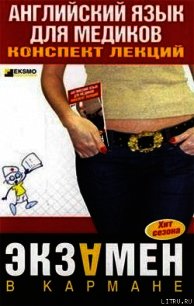Английский язык. Практический курс для решения бизнес-задач - Пусенкова Нина (читать книги онлайн без регистрации .TXT) 📗
Source: Robert S. Kaplan, Balanced Scorecard Report,
August 25, 2005. http://hbswk.hbs.edu
Essential Vocabulary
1.property, plant and equipment (PPE) – основные средства
2. financial accounting system – система финансового учета
3. embed v – вставлять, укреплять; врезаться, укладывать; внедрять
4. balanced scorecard – сбалансированная система показателей
5. perspective n – перспектива, вид, вид на будущее; угол зрения
6. outcome n – результат, последствие, исход, выход
7. Total Quality Management (TQM) – система тотального управления качеством
8.throughput n – пропускная способность, производительность
9. operating income – операционная прибыль
10. return on capital employed (ROCE) – доходность примененного капитала
11. economic value added (EVA) – экономическая добавленная ценность
12. zero defects – бездефектный
13. shield n – щит (напр. налоговый), защита
shield v – защищать, прикрывать, спасать, отвратить
14. cascade n – каскад
cascade v – спускать вниз по принципу каскада
15. track n – след, остаток, признак; образ жизни; тропа, цепь, ряд; выслеживание, преследование, отслеживание
tracking n – слежение, отслеживание
track v – следить, выслеживать, оставлять следы, прокладывать путь
16. key performance indicators (KPI) – ключевые показатели деятельности
17. overload n – перегрузка
overload v – форсировать режим, перегружать
18. alignment n – расположение по одной линии, выравнивание, совпадение
align v – располагать по одной линии, равняться, выравнивать; наводить
19. accountability n – отчетность, подотчетность; расчет; ответственность
accountable a – отчетный, подотчетный
20. top down – сверху вниз
21. leverage n – леверидж, (финансовый) рычаг
leverage v – использовать как рычаг или двигатель, использовать как средство достижения цели
22. selling, general and administrative (SG&A) expenses – торговые, общие и административные расходы
23. fixed cost – постоянные затраты
24. incur losses – нести убытки
25. package n – упаковка, контейнер, ящик, пакет
packaging n – упаковка
package v – упаковывать
26.treatment n – обращение; трактовка; лечение; обработка
treat v – обращаться, трактовать, лечить, обрабатывать
27. below-the-line expenses – расходы, имеющие необычный характер
28. activity-based costing (ABC) – система учета по видам деятельности
29. handling costs – затраты на обработку
30. pattern n – образец, пример, шаблон; узор; структура, модель
Exercise 1. Answer the following questions.
1. Why were financial accounting systems capable of valuing a firm’s assets in the industrial age, and why are they inadequate in the information age? 2. What does the balanced scorecard enable companies to do? 3. What previous management ideas does the BSC incorporate? 4. What are the four perspectives to view the organization from that the BSC envisages? 5. What is the connection between these perspectives? 6. Why is feedback so essential? 7. Why is human factor a key in implementing the BSC? 8. What does the process of creating a business model for the BSC consist of? 9. Why should the BSC be made part of the organizational culture? 10. Why is it dangerous for companies to become customer-obsessed? 11. How can a company incur losses while increasing sales? 12. Why could the time-driven ABC become a useful approach? 13. What new customer profitability metrics can be introduced?
Exercise 2*. Replace words in italics with synonyms from the text.
1. Process charts invented by Frank Gilbreth concentrated on all work elements, including non-value adding elements. 2. The assembly line was the result of innovations in production and management systems introduced by Henry Ford. 3. Two general determinants of demand are buyer’s ability to purchase and their willingness to purchase. 4. At General Motors, Alfred P. Sloan developed and put into practice business and manufacturing strategies for managing very large enterprises and dealing with variety. 5. Positioning is a marketing method which goal is to create the perception of a product, brand, or company identity. 6. Harley-Davidson Motor Co led the US heavyweight motorcycle market until the late 1970s, but then it suffered losses because of the strengthening Japanese competition and deteriorating quality of its products. 7. A connection exists between marketing problems and marketing opportunities in the dynamic environment. 8. Levi Strauss introduced Levi’s 501 jeans, a new specially developed product aimed at gold prospectors in California during the Gold Rush.
Exercise 3. A Russian manufacturing company wants to introduce the balanced scorecard in order to enhance its efficiency and competitiveness. You are a strategic management consultant and you were hired by this company to help manage the process. Explain to the general director of the company what the benefits of the BSC are; what pitfalls should be avoided; and how the BSC should be applied to become a real performance driver.
Exercise 4*. Fill in the blanks using terms given below.
Six Sigma
Six Sigma is a quality management methodology that provides businesses with the…… to improve the……… of their business processes. This increase in……… and decrease in process variation lead to………. reduction and improvement in profits, employees’……… and quality of products. It is a quality…….. and improvement program that was……… by Mikel Harry and Motorola. It………. on the control of a process until the point of Six Sigma (standard………) from a centerline, or 3.4 defects per million items. It includes identifying factors which are………. for the quality as determined by the customer. It reduces process……… and improvement capabilities, increases………. and designs systems to support the Six Sigma goals.
The Six Sigma model is a highly disciplined approach that can help companies to focus on developing and………. near-perfect products and services. It is based on the statistical work of Joseph Juran, a Rumanian-born US pioneer of quality management. The word «Sigma» is a Greek sign used for a statistical term that measures how far a given process deviates from………. (standards deviation). If the sigma…….. is higher, you are closer to perfection. One Sigma is not very good, six sigma is defined as only 3.4 defects per million. The central idea behind Six Sigma is that if you can measure how many «defects» you have in a process, you can systematically……. out how you can……… them. Thus you can almost come to «…………».
The Japanese…….. of Six Sigma can still be seen by the system of «belts» which it uses. If you are new to Six Sigma and you go on a basic………, you get a green belt. Anyone who has the………. for leading a Six Sigma team is called a black belt. Finally, there is a special elite group called Master Black Belts who…….. the Black Belts.
Typically, a Six Sigma process has the following five stages:
1. Definition. The first step in any Six Sigma project is to clarify the problem and narrow its…….. in such a way that measurable……… can be achieved within a few months. Then a team is assembled to examine the process in detail, suggest improvements, and……… those recommendations. In the manufacturing world, project managers and their……. typically begin by defining what constitutes a defect, and then establish a set of……… designed to reduce the……….. of such defects.




